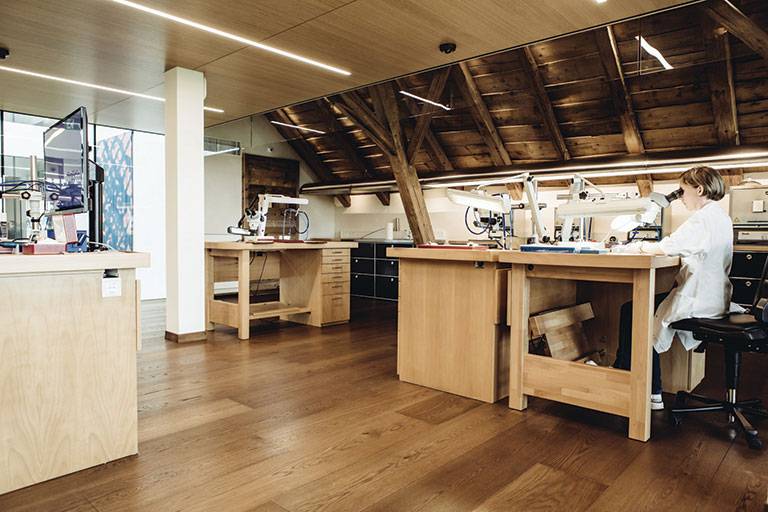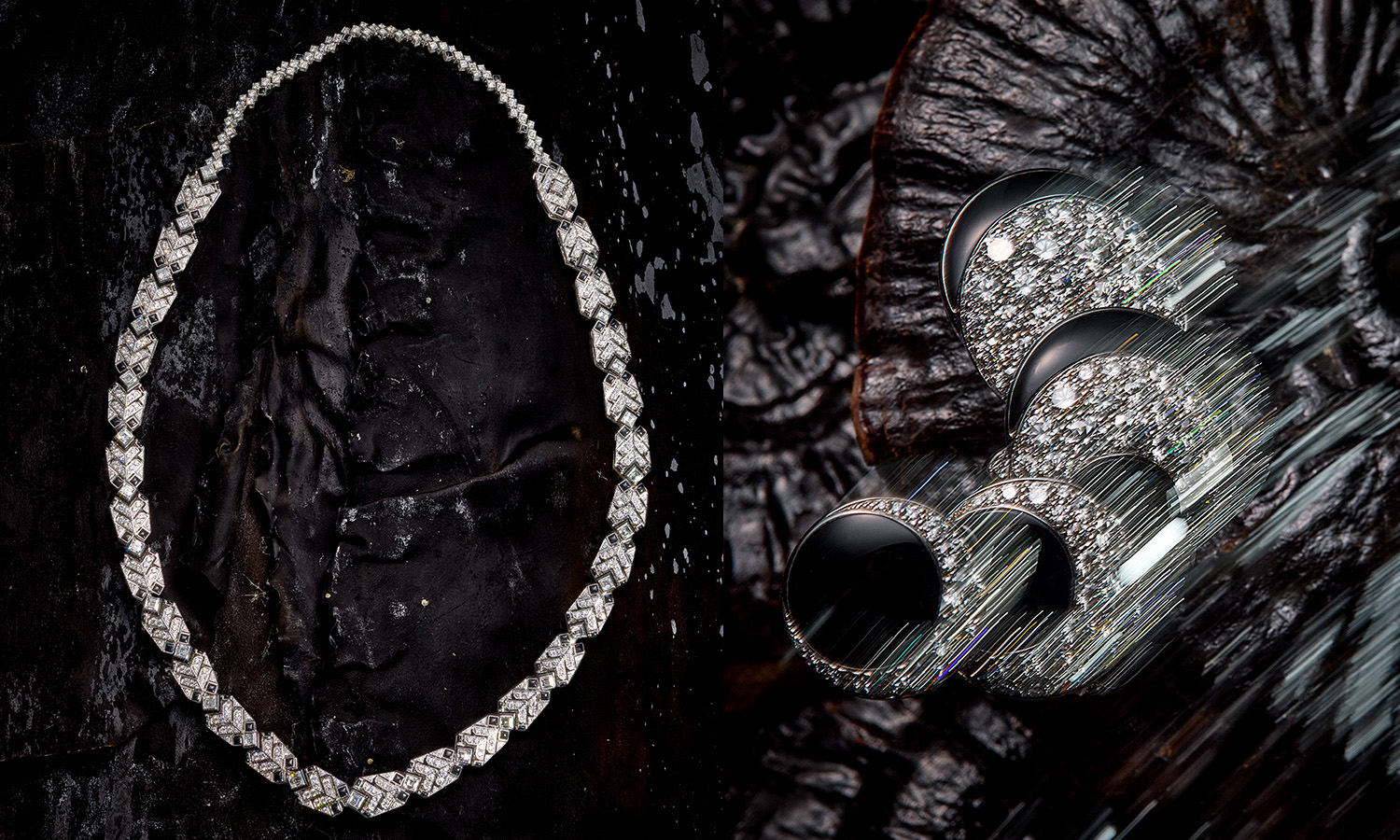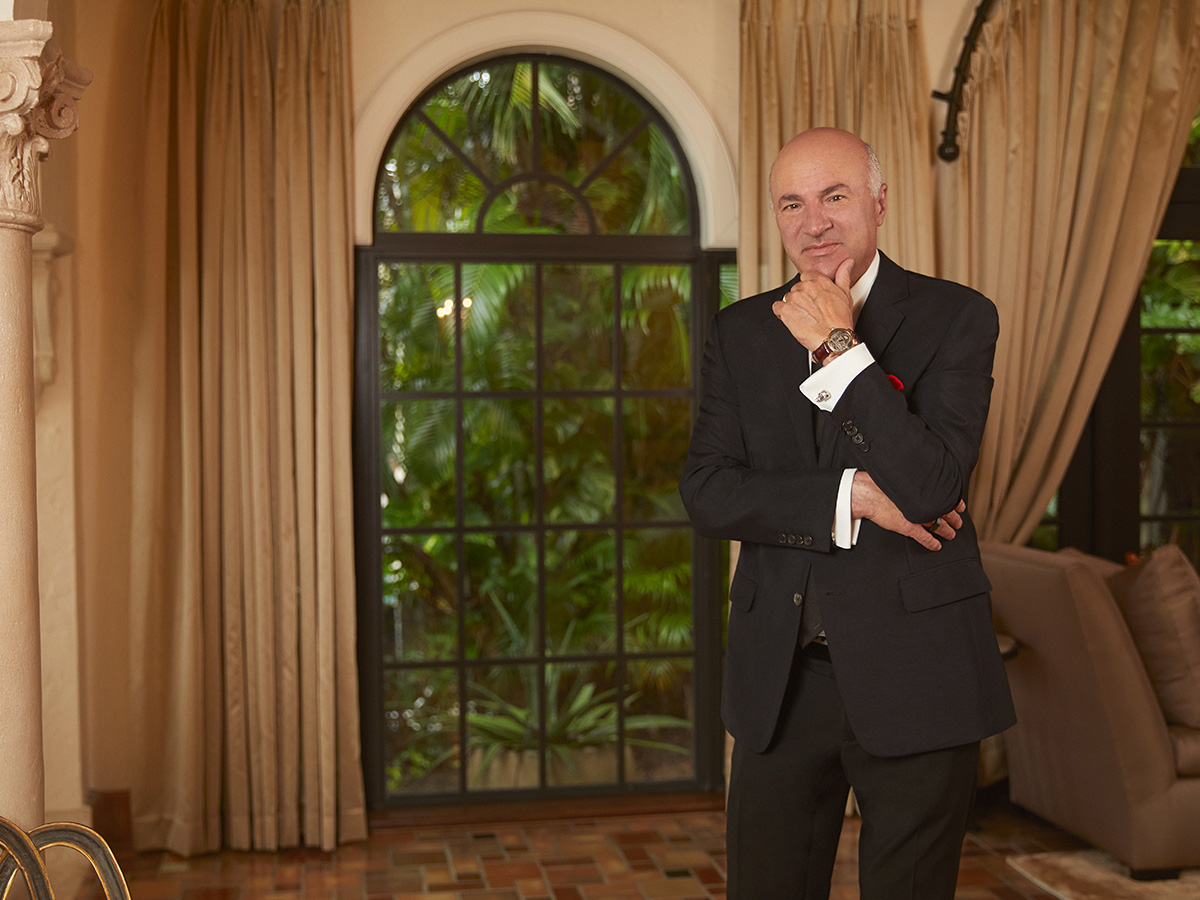
Made In Cartier: Inside The French Maison’s New Home in Switzerland
La Chaux-de-Fonds – It is widely suspected that the creation of the first clock may have been followed immediately by a desire to decorate it.
However ingenious a product, it is indeed easier to share with others when it is also a beautiful product.
The archives at Cartier certainly seem to support the theory, since Model A, the French Maison’s first table clock, features a beautiful enamel dial.

It is “a dream clock” for Carole Forestier-Kasapi, the Head of Movement Creation at Cartier, who has seen and overseen many timepieces during her young career.
Her eyes light up when the subject of the conversation appears before her. As she continues to lead the French brand’s revolutionary transformation, her penchant for Cartier’s artistic heritage continues to burn.

Earlier this year, Cartier launched its most ambitious project yet and united the brand’s senior craftsmen in enameling, diamond-setting and marquetry under a single roof.
Overseen by Forestier-Kasapi, the Maison des Métiers d’Art is a one-of- a-kind showcase, with all 350 square- meters dedicated to the reinvention and perpetuation of the brand’s oldest crafts.
Set in an 18th-century barn house located only a stone’s throw away from the brand’s much more industrial manufacture, Cartier’s latest address is the sixth in Switzerland.

Acquired five years ago, it has been entirely reimagined to keep the spirit of the building on the outside, while the dark oak doors of the entrance hide a highly sophisticated workshop. But there are no machines in Cartier’s new home.
“Only hands and eyes,” says Carole Forestier-Kasapi. Her eyes, and the precious hands of 28 dexterous craftsmen and women working on timepieces such as the exquisite Rotonde de Cartier Panther with a granulated dial composed of 3,800 gold beads fused by hand, one after the other.
Only three craftsmen at Cartier are qualified to work on that watch, and it takes four months to create a single dial.

Only a few feet away from them, specialized filigree artisans work tirelessly on a single model of the Rotonde Louis Cartier Panther’s Motif, which can take up to two weeks to finish.
Others spend up to 45 hours working on the dial of the Rotonde de Cartier straw marquetry lion motif watch.
Great watches are made not by the many, but by the few who persevere. And it will take up to three years for most of the designs to hatch from the Métiers d’Art division.
Structured much like a Californian startup, with open spaces on each floor, the new building fosters a creative environment unlike one the watchmaking industry has ever seen before.
Forestier-Kasapi spends only one or two days per week in the new Métiers d’Art department. But if it were up to her, it would be much more. The quiet suits her creative spirit. And it offers a break from the fast-paced environment around the corner.

But Forestier-Kasapi does not like it when time stands still. At the beginning of the year, she challenged the craftsmen of the Maison des Métiers d’Art to introduce a new artistic technique every twelve months.
“That’s pressure,” she says with a knowing smile. Forestier-Kasapi revels in this kind of environment. But she is confident her team will exceed expectations.
“Every time you work on one technique, you discover three more,” said Forestier-Kasapi. “That’s the real difficulty.”
If Cartier did not hesitate snapping up a 300-year-old barn, occupied not so long ago by farm animals, it’s because Métiers d’Art timepieces are in high demand, according to Forestier- Kasapi.
More than ever, collectors want to own one-of-a-kind handcrafted timepieces, made by fine artists and privy to changes at the minuscule level. All watches are unique, and some say master craftsmen can recognize a specific model many years after making it.

Although artisans are used to working on separate projects, Cartier’s latest experiment is already yielding impressive results.
According to the brand, the craftsmen are enjoying their new playground, and have begun sharing ideas. In fact, they spend almost 40 per cent of their time on the research and development of future crafts.
In 2014, Cartier introduced an artistic craft hitherto unknown in watchmaking: floral marquetry. A rare and delicate technique, it requires a series of painstaking operations, including the collection, coloring and cutting of individual rose petals, puzzled back together to create a gorgeous motif.

However, Cartier is also looking into the past in a conservation effort to revive long forgotten crafts for future generations to enjoy. Over the years, the French Maison has partnered with talents from around the world, speaking with specialists from the Louvre Museum in Paris and even collaborating with unexpected sources of luxury.
Last year, Cartier heard of a group of French monks after they successfully revived the grisaille gold paste enameling technique—an ancient craft involving the creation of a specific gold paste.
Could Cartier make use of it in one of its designs? Curiosity would lead the watchmaker to the monastery, where it began a meticulous apprenticeship to safeguard the savoir-faire and pass it on to its in-house artisans.

The Rotonde Heure Mystérieuse Pâte d’Or, featuring the brand’s iconic Panther, is the perfection of that centuries old technique.
Of course, it is only one of many artistic projects undertaken by the Maison’s ambitious new family. Many remain a secret, until Cartier can reveal a new watch collection.

“We have discovered one per cent of what can be done. I wouldn’t be here if we knew everything,” said Forestier- Kasapi.
Having already transformed itself into a fully-integrated manufacture, Cartier now leads the artistic revolution to perfect the industry’s oldest artistic techniques and unveil new ones.
 SIGN UP
SIGN UP











